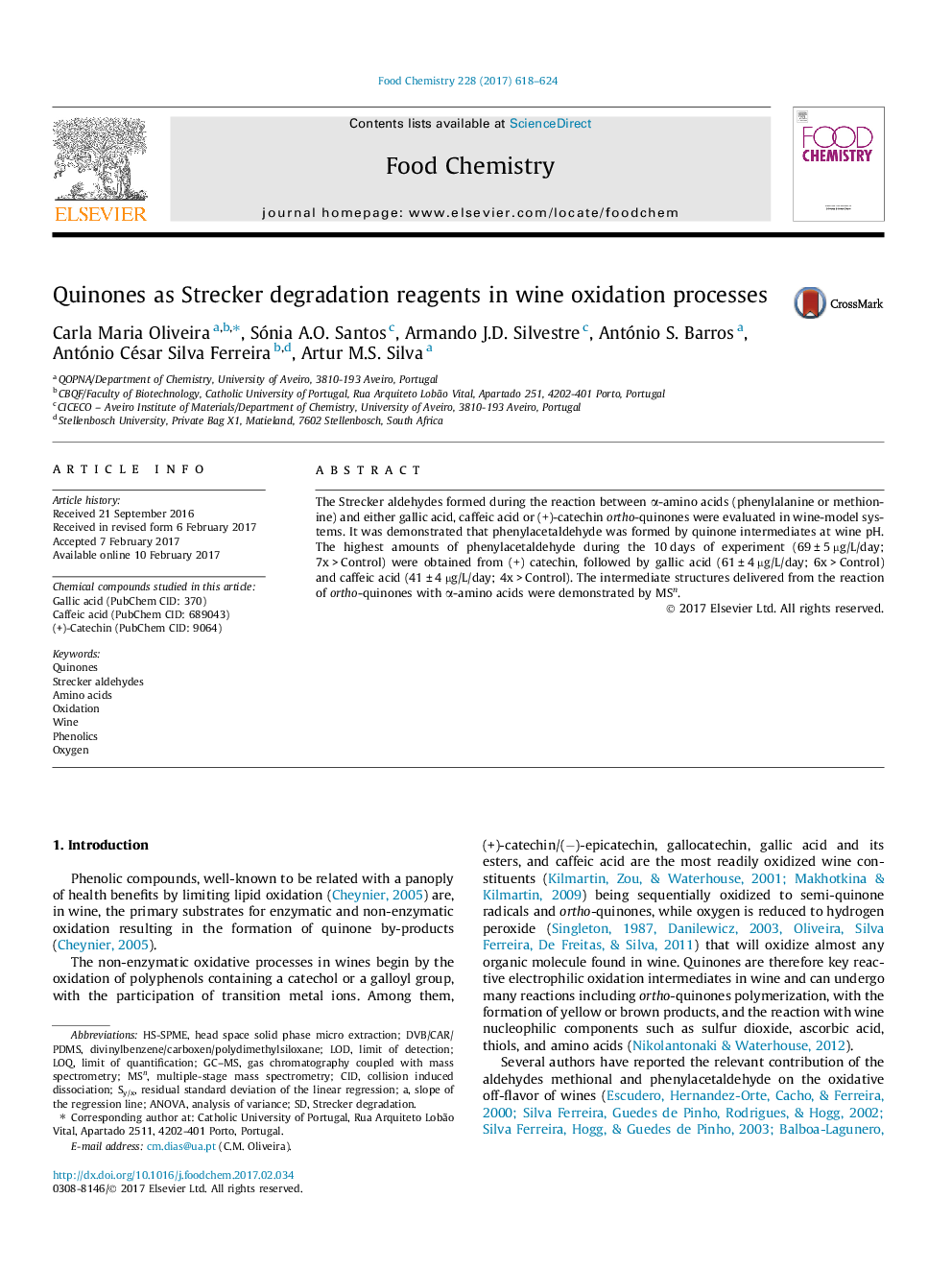| Article ID | Journal | Published Year | Pages | File Type |
|---|---|---|---|---|
| 5133880 | Food Chemistry | 2017 | 7 Pages |
â¢The role of quinones in wine oxidation as Strecker degradation reagents was studied.â¢Phenylacetaldehyde can be formed by quinone intermediates at wine normal pH.â¢Caffeic acid was the phenolic compound that produced the lowest amounts of phenylacetaldehyde.â¢(+)-Catechin was the phenolic compound that produced the highest amounts of phenylacetaldehyde.
The Strecker aldehydes formed during the reaction between α-amino acids (phenylalanine or methionine) and either gallic acid, caffeic acid or (+)-catechin ortho-quinones were evaluated in wine-model systems. It was demonstrated that phenylacetaldehyde was formed by quinone intermediates at wine pH. The highest amounts of phenylacetaldehyde during the 10 days of experiment (69 ± 5 µg/L/day; 7x > Control) were obtained from (+) catechin, followed by gallic acid (61 ± 4 µg/L/day; 6x > Control) and caffeic acid (41 ± 4 µg/L/day; 4x > Control). The intermediate structures delivered from the reaction of ortho-quinones with α-amino acids were demonstrated by MSn.
